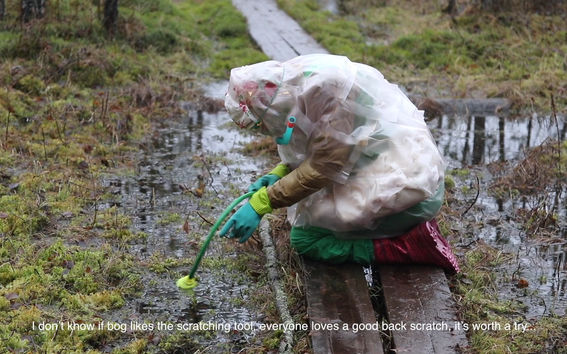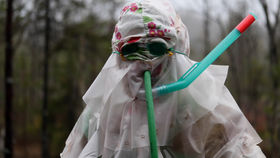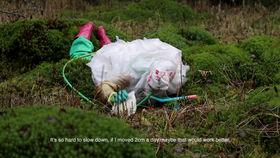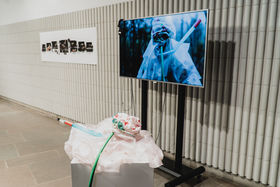Human/Non-Human Interconnections in Art, Visual Culture & Everyday Life

In the course, Living–Non Living: Human/Non-Human Interconnections in Art, Visual Culture & Everyday Life, offered by Professor Lucy Davis as part of the Master's programme in Visual Cultures, Curating and Contemporary Art (ViCCA), human and non-human relations are critically debated in relation to how these relationships are imagined, represented and performed in art and everyday life.
One of the key topics explored is: “What tools and inspirations might artists draw from studies of human/non-human interconnections as a means and as methods to respond, with some degree of positivity to critical challenges of our time? And what are some of the politics of doing so?”
This course exemplifies Aalto ARTS’ interdisciplinary commitment to creating learning and pedagogical models that advance the United Nation’s Sustainable Development Goals 2030 as students imagine possible futures and generate modes of action that contribute to stopping global warming.
The course will be offered next in 2021, going under the course titles Ecology in Theory, Practice and Everyday Life 1 and 2.
How can art and art-based learning help us to imagine and generate new solutions to challenging climate issues?
In this course, students had a long-term assignment in which they examined human/non-human interconnections in art, visual culture and everyday life.
First, students were given a “specific non-human companion” for the semester. These non-human species, drawn out of a paper bag in a randomised selection, were, for example, lichen, moss, fungi and berries. These non-human species were things that could be found in the urban forests around Helsinki and were part of a shared ecology with other assigned non-humans in the class. The idea was for the students to try to get “inside” the experience of this specific non-human companion; for instance, to think about the non-human species’ way of being in the world and its interconnections with other species, including people, through art.
The students engaged in various tasks, including examining artworks, conducting exercises and readings and researching the ecologies surrounding their non-human companions. Several artists visited the class, all of whom have made works involving collaborations with non-human others. Through the study of key philosophical texts in science, nature and culture, the students immersed themselves in the topic, contemplated difficult global ethical questions and applied these to their personal practices of art and visual culture via experiential assignments, field and laboratory work.
Changing the perspectives and course-related learning
ViCCA students Cynthia Blanchette and Jana Siren attest that they have never before worked in this manner: “Climate change is often treated as one big entity. This might make the issue seem overwhelming and daunting. Often, the problem is that the situation is perceived as too distant or too abstract. Art allows us to change perspectives and see things more locally. This helps us to understand the impact of our actions. Art also makes it possible to deal with the various emotions caused by ecosocial crises”. Cynthia and Jana further contemplate that where science fails to help in dealing with emotions, art can help to direct thinking and deal with all kinds of emotions.
The course combination of fiction and theory about ecologies, animals and plant studies as well as new material perspectives in relation to artistic practice and everyday life localises the problem so that it becomes less abstract. “The act of thinking beyond ourselves is an important process in adapting to the ever-expanding environmental crisis,” a student involved in the class debates. Some of the students feel that slowing down and focusing on one species for the whole semester was a disburdening. “It was good to get some distance from the matter that burdens. By slowing down and focusing on one species, you can think about the matter more individually. At the same time, things can be seen from a wider spectrum,” Jana ponders.
Art Exhibition Interspecies Liminalities, 2019
A number of ViCCA students are interested in exhibition production and curating, so it was natural for the students to create an art exhibition as the final project for the course. This exhibition was student-led, organised and facilitated, offering a platform for the students to conceptualise and carry out the whole process and reflect on each other's works as part of the dialogue in a public environment.
Project example from the student-led exhibition Interspecies Liminalities, 2019
Memory Bogging: Sensory Variations of a Future Past
Materials: mixed media, Authors: Cynthia Blanchette, Jana Siren & Alexandra Stroganova.
Artist statement:
Bog: an area of wet muddy ground that is too soft to support a heavy body.
This future archive focuses on the bog as an ancient living entity of forest remembrance and knowledge. The bog is a historical record of past biodiversity and ecosystem development capable of composting, preserving and creating new life. Its acidic anaerobic atmosphere works to store carbon dioxide, and this brings into question the practice of draining bogs which releases carbon dioxide into the environment. What if we have not appropriately valued this ecosystem that does not support our weight but rather attempts to consume us?
Through this exploratory investigation we look at the bog as a brain: a heavy entity consisting of dense layers of information, extinct plant matter, preserved artefacts and a deep understanding of non-human history. What would we learn from it? How would it communicate? How would we entice it to communicate? And would we learn to understand it?
Written by: Jasmin Järvinen & Anniina Suominen









